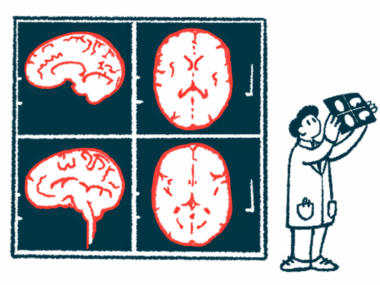Low Dose Naltrexone Review for MS Reveals High Safety Profile, Mixed Results on Benefits in Multiple Studies
Written by |

One of the most widely disputed treatments for multiple sclerosis is low dose naltrexone (LDN). While a plethora of patient testimonies and anecdotal evidence suggest immense benefits of LDN for multiple sclerosis, many clinicians are wary due to the lack of FDA approval outside of treating heroin and alcohol addiction.
Starting with the basic biology of LDN, the opiod antagonist drug is suggested to protect oligodendrocytes from cell death by reducing inflammation in the brain as a result of inducible nitric oxide synthase (iNOS) inhibition. In other words, less oligodendrocyte apoptosis means a greater potential for myelination, the key activity that could restore myelin damaged in multiple sclerosis. An alternative explanation for LDN activity is that low doses (less than 5 mg/day) of naltrexone cause the drug to act as an opiate agonist to regulate neurotransmitter activity between neurons.
Regardless of the mode of action, “Low Dose Naltrexone Therapy in Multiple Sclerosis,” published in the journal Medical Hypotheses, reports that over 70,000 LDN capsules are dispensed from a single pharmacy in only 8 months. Such a high demand for LDN resulted in the first trial for LDN initiated in December 2006 (completed in August 2007 and published in September 2008).
Led by researchers in Milan, Italy, the trial was a six-month, multi-center pilot Phase 2 trial that treated 40 patients with primary progressive multiple sclerosis (PPMS), a more severe form of the disease. “A significant reduction of spasticity was measured at the end of the trial,” wrote Dr. Gironi, lead author of the study “A Pilot Trial of Low-Dose Naltrexone in Primary Progressive Multiple Sclerosis,” published in the journal Multiple Sclerosis. Dr. Gironi further described, “Our data clearly indicate that LDN is safe and well tolerated in patients with PPMS.”
In this study, patients were dosed with 2 mg oral LDN at bedtime for four weeks. Patients were monitored by their clinicians via phone call, and the dose was increased to 4 mg if warranted. In-person follow-up visits allowed clinicians to track the progress of patients. Only one patient experienced a progression of neurological disability, and adverse events did not interfere with daily living for the patients who remained in the study.
Around the same time as the study in Milan, psychologist David Pincus announced a study to treat patients with either PPMS or relapsing-remitting multiple sclerosis. This trial was a 16-week trial with 36 patients. Unfortunately, at the close of the study, Dr. Pincus acknowledged problematic outcomes in the study. “We did not exclude patients on existing immunosuppressants,” stated Dr. Pincus. “The existing immunosuppressants may have inhibited the LDN effects in this population.” There was no apparent difference between placebo-treated and LDN-treated patients in terms of symptoms or energy levels.
The first placebo-controlled trial for LDN in multiple sclerosis was conducted by the University of California, San Francisco in early 2007 with neurological researcher Bruce Cree, MD as the lead. “A Randomized Placebo-Controlled, Crossover-Design Study of the Effects of Low Dose Naltrexone” was a Phase 3 study that dosed 80 patients with either 4.5 mg of naltrexone or placebo for eight weeks before treatment was crossed-over.
“We are grateful to the MS patients for participating in this study and wish to specially acknowledge the efforts of SammyJo Wilkinson of LDNers.org and the other fundraisers who made this trial possible,” said Dr. Cree in an acknowledgement to the World Congress on Treatment and Research in Multiple Sclerosis. “To our knowledge, this is the first patient-funded clinical trial in MS.”
[adrotate group=”4″]
Published in the journal Annals of Neurology, the article “Pilot Trial of Low-Dose Naltrexone and Quality of Life in Multiple Sclerosis” described the results of the trial. Treatment with LDN was associated with a significant improvement on parts of the mental health quality of life measures portion of the multiple sclerosis quality of life (MSQoL) score. No imaging was conducted to see if pathological disease progression was affected.
Around the same time of publication, a second placebo-controlled trial was published, but this time it was from two universities in Iran. This trial was similar in setup to the UCSF trial, but 96 relapsing-remitting or secondary progressive multiple sclerosis (SPMS) patients were treated. “The Effect of Low-Dose Naltrexone on Quality of Life of Patients with Multiple Sclerosis: A Randomized Placebo-Controlled Trial” indicated patients experienced no added benefit of treatment with LDN relative to placebo. Overall, MSQoL was not different between the two groups.
Scientists are not quite sure why clinical studies are revealing insignificant benefits of LDN therapy for multiple sclerosis, despite anecdotal evidence outside the clinical trial setting. To better understand the mechanism of action, researchers have conducted animal studies using experimental autoimmune encephalomyelitis (EAE) as a model for multiple sclerosis. “Prevention and Diminished Expression of Experimental Autoimmune Encephalomyelitis by Low Dose Naltrexone (LDN) or Opiod Growth Factor (OGF) for an Extended Period: Therapeutic Implications for Multiple Sclerosis,” an article published in Brain Research, found that support cells in the nervous system (astrocytes and oligodendrocytes) are protected by LDN treatment. In fact, in the study, LDN helped to halt EAE progression, reverse the neurological deficits experienced by the afflicted mice, and prevent neurological dysfunction for an extended period of time.
If more successful clinical trials are conducted and the FDA approves LDN for multiple sclerosis therapy, patients would benefit from more than just a reduction of symptoms. As reported by “The Use of Low-Dose Naltrexone (LDN) as a Novel Anti-inflammatory Treatment for Chronic Pain,” which was published in Clinical Rheumatology, LDN costs an average of $35 per month assuming no insurance coverage. The low cost relative to other medications is attributed to its generic status. Another major benefit is the low side effect profile. Clinical trials for a wide range of diseases have shown no incidences of ulcers, renal insufficiency, medication interference, or withdrawal symptoms. The most common side effect is an increase in vivid dreams that may go away over time.
Yet LDN is accompanied by a list of disadvantages, in addition to the lack of clinical studies. Insurance companies will not cover LDN for off-label uses, although the low price mitigates this concern. Since not all patients have access to LDN (4.5 mg), some patients create their own dose by dividing commercially available 50-mg tablets. Fortunately, it is unlikely a patient could overdose on LDN, but the danger of inconsistent dosing remains. Additionally, no long-term safety studies have been conducted for LDN — only naltrexone. Although researchers indicate that a lower dose of medication seems as though it would have fewer side effects, the difference in mechanistic action may bring on unforeseen safety issues. Until more trials are conducted and LDN provides a clear benefit without any adverse events, multiple sclerosis patients will continue to wait and see if one more potentially life-saving treatment is approved.





